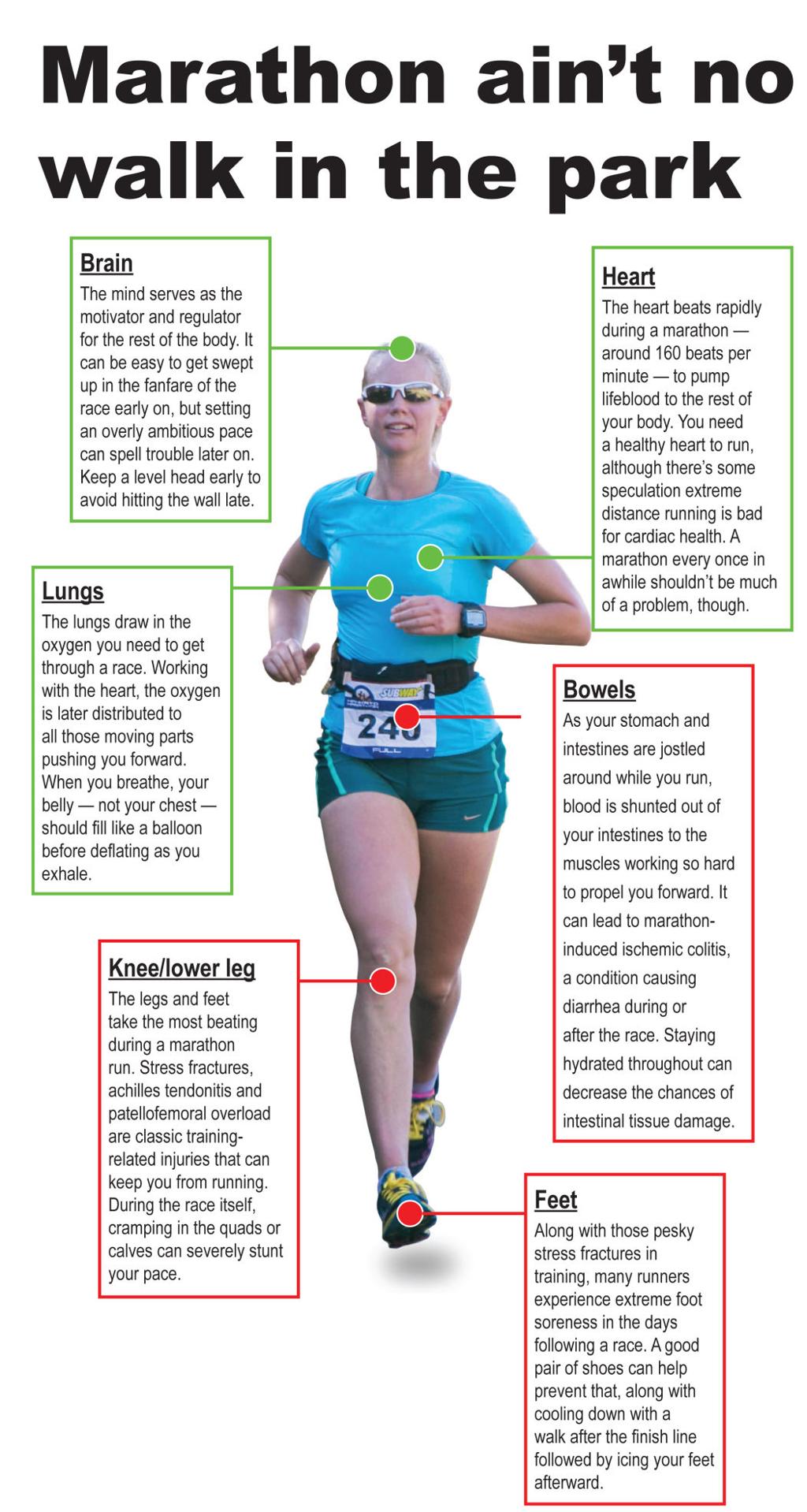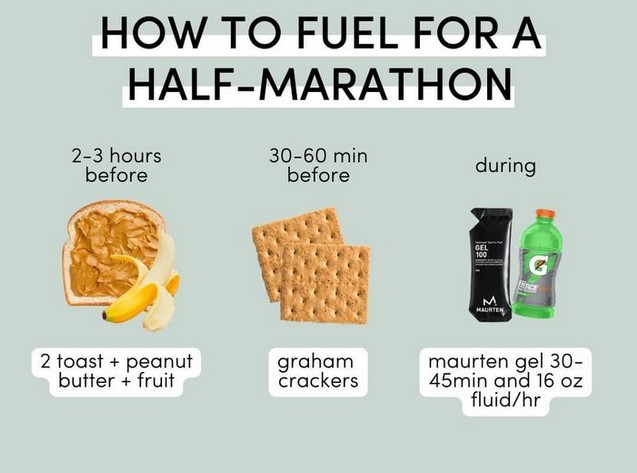How Do Marathon Runners Breathe
Marathon runners breathe in through their nose and out through their mouth, utilizing their diaphragm to take deep breaths for maximum oxygen intake. This breathing technique helps improve endurance and maintain pace during long-distance running.
Marathon runners rely on efficient breathing to sustain their performance throughout the race. A strategic combination of nasal and oral breathing, along with the use of the diaphragm, supports optimal respiration. Understanding the significance of breathing techniques in marathon running is crucial for athletes aiming to enhance their performance and endurance.
This article explores the mechanics of breathing for marathon runners, highlighting the impact of proper breathing techniques on athletic stamina and overall race performance. Delving into the nuances of respiratory patterns during marathon running can offer valuable insights into maximizing performance and maintaining physical well-being during long-distance races.

Credit: www.thetimes.co.uk
Factors Affecting Breathing During Running
Running impacts marathon runners’ breathing due to various factors including pace, technique, and lung capacity. Efficient breathing patterns help optimize oxygen intake during long distances, promoting endurance and performance. Proper breathing strategies, such as rhythmic breathing, can enhance runners’ stamina and overall race experience.
When it comes to marathon running, proper breathing technique is crucial for endurance and performance. Understanding the factors that affect breathing during running can help runners improve their lung capacity, enhance oxygen uptake, and optimize their overall running experience. Two key factors influencing breathing patterns are breathing rate and muscle fatigue impact.
Breathing Rate
Breathing rate refers to the number of breaths taken per minute during exercise. During running, the body’s demand for oxygen increases, leading to a higher breathing rate. This allows more oxygen to be taken in and carbon dioxide to be expelled.
Factors that influence breathing rate include:
- Intensity: As the intensity of running increases, the body needs more oxygen, resulting in a higher breathing rate.
- Training: Regular aerobic exercise training can improve lung function and decrease breathing rate during running, allowing for greater efficiency.
- Environmental conditions: High altitude, heat, humidity, and pollution can all affect breathing rate during running. In these conditions, the body may need to work harder to maintain an adequate oxygen supply, leading to an increased breathing rate.
- Physical fitness level: Well-conditioned runners tend to have a lower breathing rate compared to beginners, as their bodies have adapted to the demands of running.
Muscle Fatigue Impact
Muscle fatigue can also impact breathing during running. As muscles tire, they require more oxygen to sustain their activity, increasing the demand on the respiratory system.
Here are a few key points regarding the impact of muscle fatigue on breathing:
- Respiratory muscle fatigue: The diaphragm and intercostal muscles responsible for breathing may experience fatigue, causing them to work less efficiently. This can lead to a feeling of breathlessness and increased breathing effort during running.
- Core and postural muscles: Weak core muscles can negatively affect breathing mechanics and stability, leading to inefficient breathing patterns and potential fatigue.
- Training and conditioning: Regular exercise focusing on strengthening the respiratory muscles and improving overall fitness can help reduce muscle fatigue during running, allowing for more efficient breathing.
By being aware of these factors, marathon runners can develop effective strategies to enhance their breathing during training and races. Proper conditioning, training, and attention to breathing technique can make a significant difference in both performance and overall running experience.
Techniques For Efficient Breathing
Efficient breathing is crucial for marathon runners as it affects their performance and endurance. Mastering proper breathing techniques can help runners optimize their oxygen intake, improve their stamina, and prevent fatigue. Understanding the different strategies for efficient breathing, such as diaphragmatic breathing and cadence synchronization, is essential for marathon runners looking to enhance their performance.
Diaphragmatic Breathing
Diaphragmatic breathing, also known as belly breathing, is a fundamental technique for marathon runners to maximize their oxygen intake. Rather than shallow chest breathing, diaphragmatic breathing involves engaging the diaphragm to draw air deep into the lungs. This technique allows for more efficient gas exchange, enhancing oxygen delivery to the muscles, thus improving endurance and reducing the risk of cramps or side stitches.
Cadence Synchronization
Cadence synchronization is another essential aspect of efficient breathing for marathon runners. By syncing their breathing pattern with their running cadence, runners can maintain a steady flow of oxygen to their muscles, promoting endurance and preventing oxygen debt. Effective coordination of breathing with each stride not only optimizes oxygen utilization but also contributes to a more rhythmic and sustainable running pace.
Common Breathing Challenges Faced By Runners
Marathon runners often face various breathing challenges during their runs, which can impact their performance and overall experience. Understanding these challenges and knowing how to address them is crucial for runners to achieve their best performance and maintain their stamina throughout the race.
Side Stitches
Side stitches, also known as a “side cramp,” are a common issue among runners, caused by the diaphragm muscle irritating the surrounding nerves. This discomfort can affect breathing patterns and significantly hinder a runner’s pace. Proper breathing techniques, such as deep diaphragmatic breathing and maintaining a steady rhythm, can help alleviate side stitches and prevent their occurrence.
Breathing Pattern Disturbances
Breathing pattern disturbances can disrupt a runner’s stride and lead to increased fatigue. Shallow breathing or uneven breaths can limit the amount of oxygen reaching the muscles, affecting performance and causing discomfort. Focusing on steady, rhythmic breathing and ensuring full inhalation and exhalation can help maintain optimal oxygen intake and support a more efficient running stride.
Pre-run And During-run Breathing Preparation
Efficient breathing is essential for marathon runners to maintain optimal performance and endurance. Preparing your breathing before and during a marathon can vastly improve your running experience.
Warm-up Practices
Before embarking on a marathon, it is important to warm up your body, including your respiratory system. One effective warm-up practice is diaphragmatic breathing. To do this:
- Lie down on your back and place one hand on your chest and the other on your abdomen.
- Take a deep breath in, feeling your abdomen rise as you fill your lungs with air.
- Exhale slowly, allowing your abdomen to fall as you release the air.
- Repeat this deep breathing exercise for a few minutes to fully engage your diaphragm.
Diaphragmatic breathing helps expand lung capacity and strengthens the respiratory muscles, preparing them for the upcoming run.
Breathing Exercises
In addition to warm-up practices, incorporating specific breathing exercises into your routine can further enhance your breathing abilities during a marathon. Here are a few exercises to try:
- Box Breathing: Inhale deeply for four counts, hold your breath for four counts, exhale for four counts, and then hold your breath for four counts. Repeat this cycle several times to regulate and control your breathing.
- Interval Breathing: During your run, match your breathing rhythm with your running pace. For example, if you take three steps while inhaling, try taking three steps while exhaling. This synchronizes your breath with your strides, promoting efficiency and preventing fatigue.
- Alternate Nostril Breathing: This technique involves closing one nostril with your thumb and inhaling deeply through the other nostril. Then, switch nostrils and exhale slowly. Repeat this pattern, alternating nostrils, to balance your breath and bring a sense of calmness to your body.
Incorporating these breathing exercises into your training routine can condition your respiratory system, allowing you to maintain steady airflow and endurance throughout your marathon.
Impact Of Breathing On Performance
Impact of Breathing on Performance:
Oxygen Uptake Efficiency
Proper breathing enhances oxygen uptake, crucial for marathon runners.
Endurance Enhancement
Efficient breathing boosts endurance and performance during marathons.

Credit: www.mankatofreepress.com

Credit: therunexperience.com
Frequently Asked Questions Of How Do Marathon Runners Breathe
How Do You Breathe During A Marathon?
During a marathon, breathe deeply to supply enough oxygen to your muscles. Take steady breaths in through your nose and out through your mouth. Maintain a relaxed breathing rhythm and avoid shallow breathing. Focus on deep diaphragmatic breathing to fuel your body efficiently throughout the race.
Do Marathon Runners Breathe Through Nose Or Mouth?
Marathon runners mainly breathe through their mouths to get more oxygen during intense physical activity. The large amount of air intake helps to supply the body with sufficient oxygen to sustain the effort. Breathing through the nose alone may not provide enough oxygen for such strenuous activity.
How Should A Long Distance Runner Breathe?
For long distance running, breathe deeply and rhythmically through your nose and mouth. Inhale and exhale with each stride for efficiency. Maintain a steady breathing pattern to regulate oxygen intake and minimize fatigue. Focus on belly breathing to maximize lung capacity and endurance.
Drink water to stay hydrated.
Conclusion
Marathon runners rely on their respiratory system to deliver oxygen to their muscles and support their endurance. By practicing proper breathing techniques, such as belly breathing and exhaling fully, they are able to optimize their oxygen intake and release carbon dioxide efficiently.
These strategies allow runners to maintain their stamina and achieve their goals, whether it be completing a race or setting a new personal record. Mastering the art of breathing can make a significant difference in a runner’s performance and overall health.
Keep these techniques in mind to enhance your own running experience.






